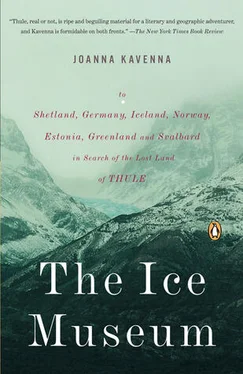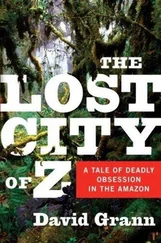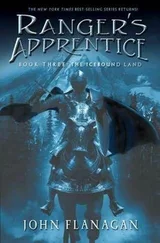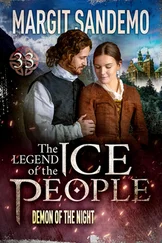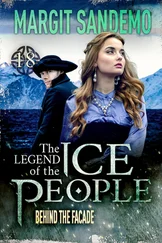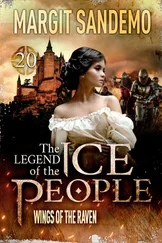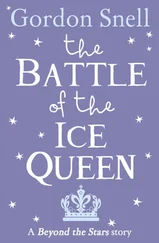Sometimes the scientists sat in the sea between Svalbard and Greenland, watching the changing of the ice. Or they sat in their small huts on Ny-Ålesund, writing papers proposing that climate change might be causing a retreat of glaciers in the Arctic region. Some of them said the global sea level was increasing, an effect of the melting of the ice. The scientists stayed cautious, even as they quoted their statistics. They were reluctant prophets, talking only of ‘climate change scenarios,’ things that might happen. Knowing that in the past definitive theories had been proved to be ephemeral, the scientists scattered their reports with qualifications, insisting that everything was merely hypothesis. Everything was laced with uncertainty, though most of the scenarios seemed to be varieties of disaster. They wouldn’t tell the international corporations what to do; they wouldn’t tell the governor to kick the coal bosses off his idyll. They monitored and assessed.
Running around the base was an Englishman called Jeremy, constantly cheerful, greeting everyone he met with great warmth and enthusiasm. The winds were always biting, but he still stopped on the paths, shaking hands. His hair was always perfectly parted, even in driving gales, and he always wore a fleece jacket in blue, brown windproof trousers, a striped shirt like a city banker, and large boots, which he stamped on the ground as he said, ‘Well, lovely, really lovely to see you, must be off’—this to a scientist he had seen ten times already that day, and would see another ten before the day’s end, there being only one path in the settlement, only one dining room, and hardly any scientists.
I shook hands with Jeremy, and I learned that he ran a scientific station, one of the huts glazed with ice, lashed by the winds. Weaned on stories of Scott and Shackleton, Jeremy had decided from an early age that he wanted to work in Antarctica. He realized, he said, that he had to get a skill which would be useful on expeditions, so he trained to be a carpenter. After a few years, he became an administrator in British Antarctica, overseeing scientific research bases in the south. Then, he said, he was offered the chance to come to Svalbard. ‘I thought, I’ve never seen the remote north,’ he said. ‘So I thought, why not! Beautiful place, really extraordinary to work here. And gosh it’s cold today’—as the wind slammed us both against the wall of a hut—‘let’s go inside, my gosh, let’s go inside.’
I respected his striped shirt; I respected his ungloved hands. His constant affability was an achievement in this place, which was nothing more than a dozen huts by an almost frozen fjord, the icebergs drifting slowly through the sludge, the deep blue glacier rumbling in the distance.
Everything in the scientific research station was orderly—huts, equipment, the small quayside with the motorboats lined in rows. The mess was open for breakfast, lunch and dinner, and the scientists ate together. One day Jeremy said: ‘You should of course meet Alice.’
Alice knew all about the coming earth, he said, though like all the others she was reluctant to commit herself. But she could spin a riddle or two, offer up an augury, as long as no one asked her to stamp it as definite. ‘Alice is a very remarkable person,’ said Jeremy.
Suddenly there was a murmur of voices. A scientist had fallen into the ice fjord. He was Olav, he had been out looking at the bird cliffs, making notes about the end of the season. He had hit a patch of ice in the fjord, and his boat had buckled like a crashed car and thrown him in. Murmurs of concern broke out among the scientists, and the mess immediately emptied. Jeremy said ‘I’m awfully sorry, I must go and see if there’s anything I can do. I’ll tell Alice about you—’ and he ran out.
The settlement was in a state of shock from the near loss of a scientist to the elements. No one talked much, and Jeremy was nowhere to be found. I sat in the hotel, leafing through information packs and rule-books, and then I walked along frosted train tracks towards the edge of the fjord.
Later I went out on the fjord with Alice. I was slightly nervous because of what had happened to Olav, but Alice put me in a luminous survival suit and told me to blow a whistle if anything happened. Alice was small and compact, wearing jeans and a large sweater, with grey-blonde hair and an expression of rapturous calm. She didn’t want to be adamant, she said, but some things looked very worrying indeed, and it was hard to know what to say. She had not found so many signs of good news, she said, vaguely, deliberately vaguely. But things might change, she added, lending me a hand as I climbed into the small boat.
The boat was a nautical midget under the towering bergs. The sludge-ice massed around the hull; the pancake-ice scratched at the paintwork. Under a twilight sky Alice steered the boat into the icy centre of Kongsfjorden, past the icebergs drifting from the glacier, swaying on the waves. A bearded seal yawned on its iceberg and flopped into the water. From a distance, the glacier looked serene, edging towards the fjord, a gentle slope of clear white and blue ice, the mist romantically encircling its base, softening its fall towards the water, and the icebergs looked pure white and blue. Out in the middle of the fjord, the boat hit the waves and lurched sideways as Alice swerved to avoid an iceberg.
Alice steered the small boat through the massing chunks of ice to the bottom of the glacier, stopping at a stretch of ice-littered sea twenty metres away. The glacier chilled the air around it, adding further depths of coldness to the evening. It was a squat glacier, dribbling ice into the fjord. The ice in the bergs was muddy, greased with dirt. For a few minutes, we sat in the boat and listened to the roar of the glacier, the groaning of the ice. As we listened, a loud boom came from the glacier and a great chunk of ice dropped into the sea before us, shaking the boat. Then everything was calm again, except for the lapping of the waves, causing the bergs to sway and rock in the water.
Sitting in the boat, staring at the glacier, Alice explained to me that it was sometimes difficult to be happy, knowing what she did about the ice-plains and their coming doom. She was not a mystic, or a novelist, she wanted to emphasise, but she thought some things were so worrying and probable that it was worth talking about them. In recent years, there had been bad tidings from the archipelago, from the scientific researchers on Svalbard. Chemicals from Russia, from North America, from Europe had circled in the air and water and moved towards Svalbard. The ice might melt, at some stage, and no one was predicting a sudden improvement in conditions.
‘Let us just say,’ Alice said, dropping the tiller and sitting upright in her survival suit, ‘that there are man-made chemical compounds found in high concentrations on Svalbard, and they seem to cause damage to those animals in which they accumulate. They come by air, they come by water, and they are changing the wildlife on Svalbard. The Arctic wilderness,’ Alice continued, after a long pause, ‘might be under threat from the chemicals of more southerly civilizations, chemicals carried by air from Europe and North America, or by water across the oceans—from Siberia to Spitsbergen.’
Alice stopped talking while she manoeuvred the boat backwards, because we were being lapped towards the glacier, drawn into its coldness. I sat quietly, shivering violently, waiting for her to resume. Alice said: ‘This business of drift, the Arctic drift, you mentioned it earlier. Since the 1980s there have been systematic changes in the ice around the North Pole. Nearly all scientists now agree that this is very unlikely to be caused just by nature,’ she continued. ‘It is the speed which makes the change different from before. There have been very low sea ice measurements and these yearly lows have strangely coincided with years when there has been an unusually large transport of ice from the Siberian Ocean towards Canada.
Читать дальше
